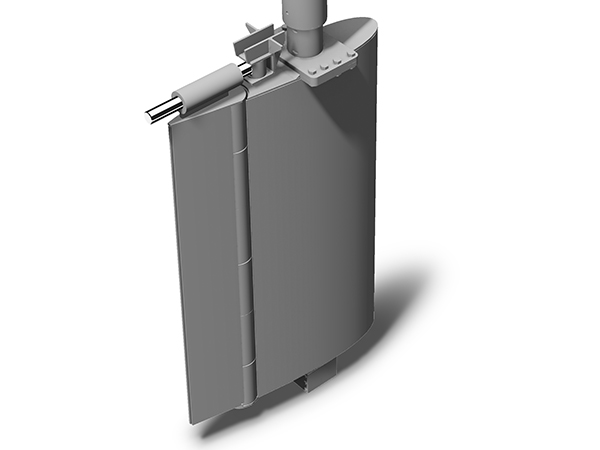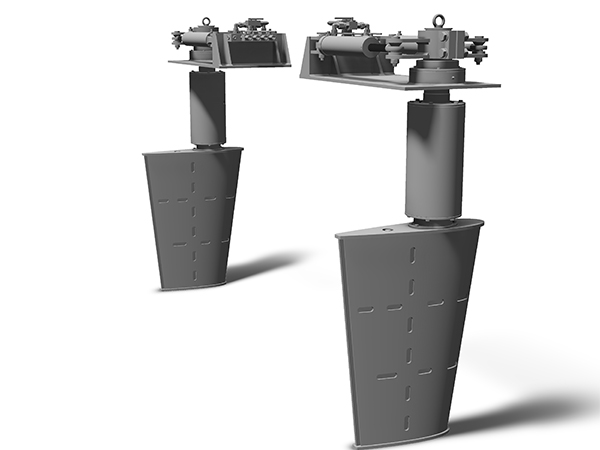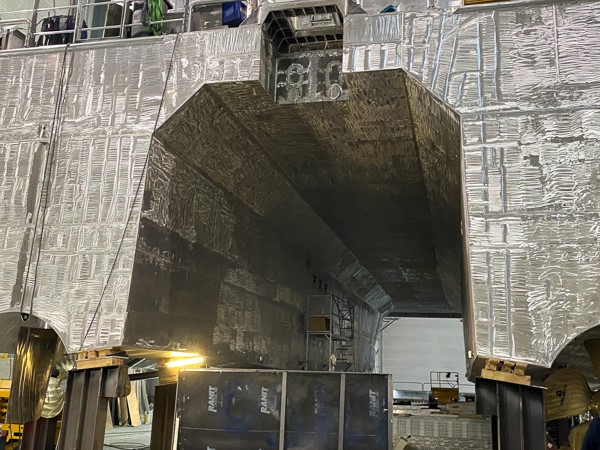Choosing Between Twin Rudder and Single Rudder for Professional Vessels
When it comes to professional vessels, the design of the ship's rudder system plays an instrumental role in determining the ship's maneuverability, efficiency, and safety. Two common rudder designs are the single rudder and the twin rudder systems. In this blog post, we delve into an insightful comparison of these two rudder designs to better understand their advantages and implications for professional maritime steering.
In this video you can see an example of what a naca profile rudder looks like before it is fitted.
Single Rudder Systems
A single rudder system, as the name implies, consists of one central rudder located at the stern of the ship. This rudder design has been the standard for centuries due to its simplicity and cost-effectiveness.

AS SCAN single rudder system designed with flap system for more maneuverability especially in low speed
Advantages of Single Rudder Systems
- Simplicity: Single rudder systems are less complex, which means they're easier to install, maintain, and repair.
- Cost: With only one rudder to construct and maintain, single rudder systems are generally less expensive than their twin counterparts.
- Efficiency at High Speeds: Single rudder systems perform exceptionally well at high speeds, providing adequate directional control with a minimal drag effect.
Disadvantages of Single Rudder Systems
- Reduced Maneuverability at Low Speeds: Single rudder systems can struggle with steering at low speeds. This can be particularly problematic in tight harbors or during docking procedures. You can improve the maneuverability by mounting af flap on the rudder.
- Vulnerability: If a single rudder system fails or gets damaged, the vessel loses its steering capabilities. This is a significant safety concern in professional maritime operations.
Twin Rudder Systems
Twin rudder systems, on the other hand, feature two rudders typically located on either side of the ship's propeller. Although they are more complex and costly, twin rudder systems offer several significant advantages.

AS SCAN Two-rudder system designed with two independent steering gear for more flexibility and safety with redundant steering gears.
Advantages of Twin Rudder Systems
- Enhanced Maneuverability: Twin rudder systems provide superior control, especially at low speeds. This can be a significant advantage during docking or navigating through narrow waterways.
- Increased Safety: With two rudders, if one fails or gets damaged, the other can still provide steering, reducing the risk of a complete loss of control.
- Improved Efficiency at Low Speeds: Twin rudder systems can improve hydrodynamic efficiency at lower speeds, potentially leading to fuel savings.

AS SCAN two rudder system mounted on a crew transport vessel under construction in a Norwegian shipyard
Disadvantages of Twin Rudder Systems
- Increased Complexity: Twin rudder systems are more complex to install, maintain, and repair.
- Higher Costs: The construction, installation, and maintenance of two rudders can be significantly more expensive than a single rudder system.
Conclusion
Choosing between a single rudder and twin rudder system for professional vessels depends on a variety of factors, including the vessel's size, intended use, operational speed, and budget. While single rudder systems are simpler and more cost-effective, twin rudder systems offer improved maneuverability, safety, and efficiency at low speeds.
In this video you will see a cargo vessel sailing with a single rudder steering system with a naca profile:
To make an informed decision, maritime professionals should consider these factors and choose the rudder system that best serves their operational needs and safety requirements. After all, in the professional maritime world, the right rudder system can make all the difference in a vessel's performance and safety at sea.

